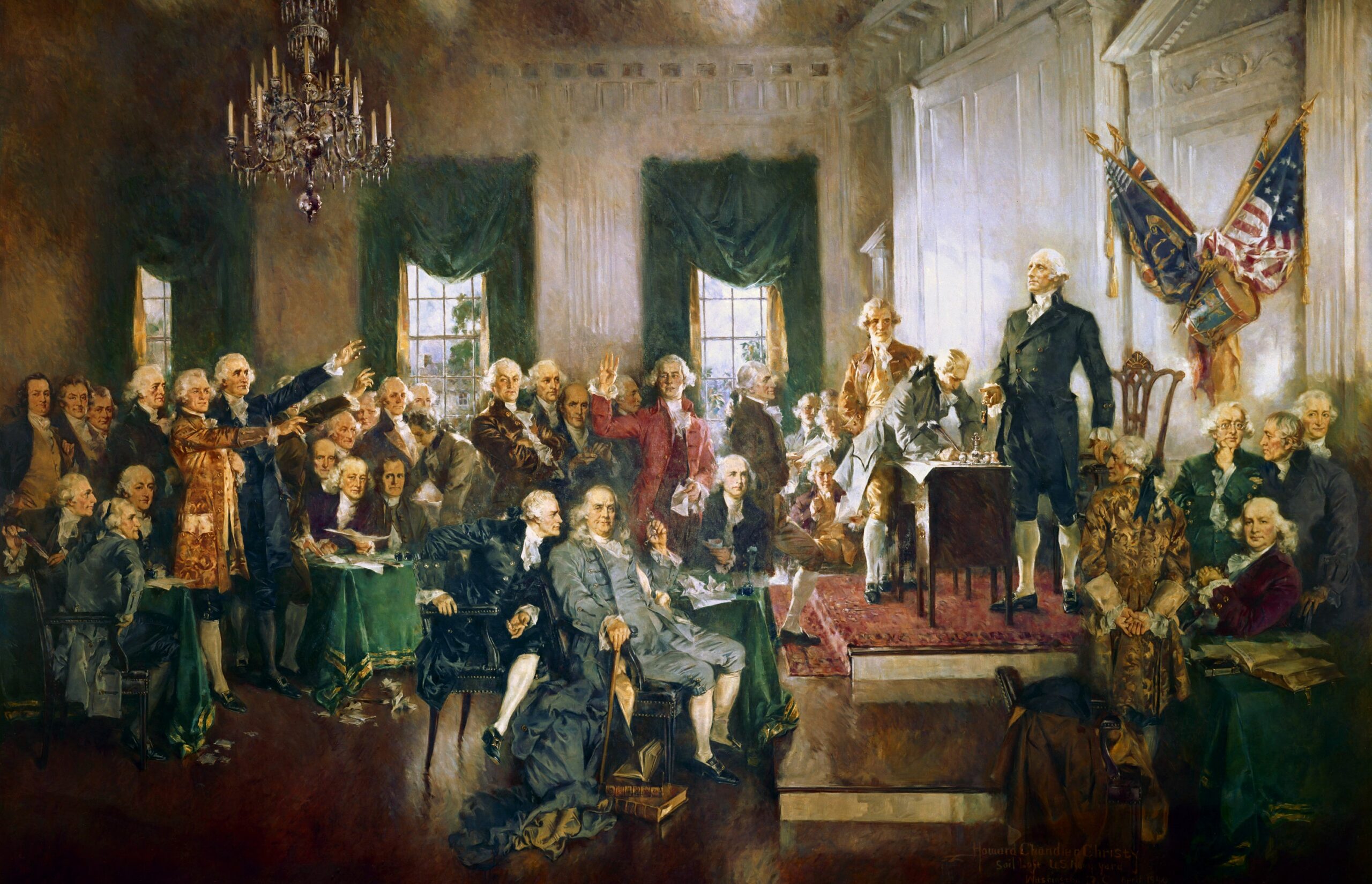Constitution
This Constitution Day, Let’s Lower the Stakes to Lower the Temperature
The Constitution was intended to reserve most governing powers to the States. A return to that maxim could cool national passions.

Escalating lawfare sealed the collapse of the Roman Republic after 500 years of extraordinary success. For the last century or so of its existence, the Republic saw dramatic lurches between leading parties, and as each new leader came into office he sought to use the maximum extent of state power to exact vengeance on his political opponents. Eventually the stakes grew so high that surrendering power to an opponent became unthinkable. Thus the Roman Empire was born.
The high stakes of the U.S. federal administrative state
We find ourselves on a distressingly similar trajectory. More and more power at the federal level has been concentrated in the executive branch, with the President at its head and a growing army of agency bureaucrats behind him. Despite a series of decisions from the United States Supreme Court that consistently point to Congress as the legitimate source of federal laws, the agencies continue to attempt to disguise major policy decisions as regulation interpreting statutes. Alternatively, the agencies use regulations to attach ever more strings to federal dollars sent to the states. The net result is the same: more and more decisions about the legality of our day-to-day activities are decided by federal bureaucrats instead of elected state legislators.
America’s Founders were keen students of Roman history. They were well aware of the course of that Republic’s decline. At Valley Forge, George Washington arranged a performance of the play Cato so his men could draw inspiration from the last stand of the Roman Republicans against the inexorable tide of tyranny. Later, the drafters of the Constitution looked to Rome for lessons in how to build an enduring republic.
The Constitution as an effort toward a more robust republic
Our Constitution was designed, in part, with an eye toward avoiding Rome’s institutional death spiral. The branches of government were refined and the checks and balances between them analyzed and improved. The Roman Senate became our Senate, and our House of Representatives was intended to be a more stable counterweight than the Roman assemblies. Our presidency was more stable and robust than their consulate and subordinate executive offices, but we—very much by design—lack Rome’s mechanism for a temporary dictatorship.
The most notable difference may be federalism. While Rome gave a lot of leeway to its periphery as long as the provinces paid taxes and provided men for the legions, that was an arrangement of convenience and did not reflect an abiding limitation on the centralized power of the capitol. The United States, on the other hand, explicitly limits the federal government’s power and reserves most powers for the states or the people.
One benefit of our constitutional arrangement is that different states can be different—very different—without coming into conflict with each other. Our Constitution gives California room to be California while Tennessee can at the same time be Tennessee. There are constitutional limits on what any state can do, and there is a proper role for the federal government to bring uniformity in certain areas, but our constitutional design ensures broad latitude for the people of each state to govern themselves.
Too many issues of federal importance
By keeping many issues off the national stage, our federalist Constitution is intended to reduce conflict and help us live together in relative harmony. We can focus on what we can productively do together. We share a border we need to protect, we have a national military that must remain the envy of the world, and we as a country have a significant role to play internationally. By narrowing our focus we can bring more competence to bear on these critical duties. When a new administration expends time and attention fighting a culture war, it necessarily spends less time protecting our national interest.
In addition to distracting from a focus on major federal issues, agency overreach has created policy instability. We have strayed from the constitutional process in which legislative debate leads to lasting compromise. When instead the federal agencies ping-pong between two very different ideological visions, the regulatory whiplash leaves everyone worse off. Law by regulation means one side pushes as far as it can in one direction, and as soon as the White House changes hands the newcomer swings as far as they can in the other direction. The law never settles and the same fights happen over and over and over again.
The Constitution and a State’s right to be wrong sometimes
Our Constitution provides an effective process to resolve our disagreements and maintain a strong and vital country. Keeping more disagreements at the state level gives us fewer things to disagree about at the federal level. Just because California occasionally gets it wrong is no reason to impose a heavy-handed federal leviathan. We are all free to make our own mistakes, and our citizens are free to move elsewhere if they find another state more appealing.
This Constitution Day, we should resolve to steer the federal focus toward federal issues and recognize the wise limitations installed to protect us from our contentious natures.
This article was originally published by RealClearPolicy and made available via RealClearWire.
Jonathan Skrmetti serves as Tennessee’s Attorney General & Reporter.
-

 Civilization2 days ago
Civilization2 days agoDC Pipe Bomb Arrest Raises Questions About Christopher’s Wray’s FBI
-

 Guest Columns4 days ago
Guest Columns4 days agoCongressional Leaders See Far Higher Stock Returns Than Peers
-

 Civilization3 days ago
Civilization3 days agoThe Legal Logic Behind U.S. Operations Against Narco-Terrorist Networks
-

 Civilization4 days ago
Civilization4 days agoHow Trump Changed America
-

 Executive3 days ago
Executive3 days agoNewsom’s ‘National Model’ for Homeless Wracked by Fraud
-

 Executive2 days ago
Executive2 days agoWhen You’re in a Hole, Stop Digging
-

 Education2 days ago
Education2 days agoWaste of the Day: Taxpayers Subsidize Football Coach Severance
-

 Civilization1 day ago
Civilization1 day agoPence Calls on Trump To Fire RFK Jr Over Abortion Drug










